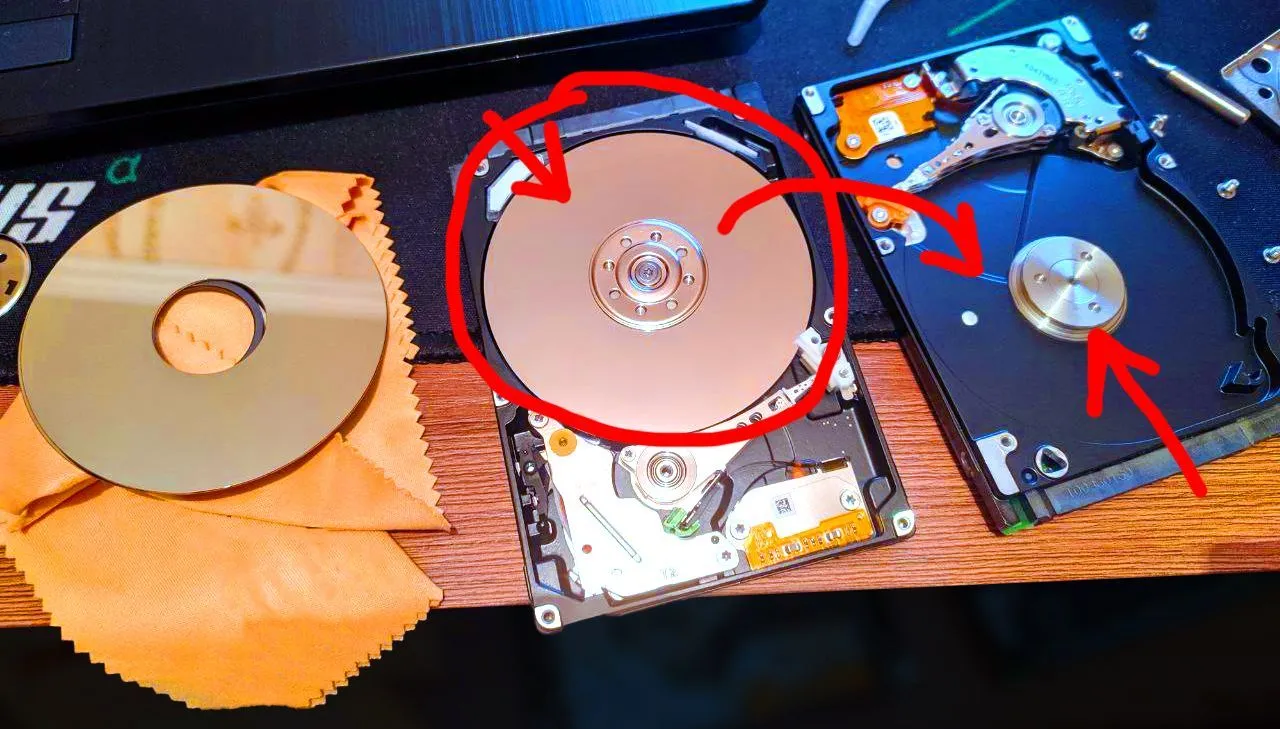I don't get what the arrows are supposed to say
Sysadmin
A community dedicated to the profession of IT Systems Administration
No generic Lemmy issue posts please! Posts about Lemmy belong in one of these communities:
[email protected]
[email protected]
[email protected]
[email protected]
I'd assume they put the platter into another drive body due to some mechanical or electronics failure in the original drive.
Okay, That's what I thought. Just confused about all the extra arrows
Is this actually doable? I've kept an old hard drive with stuff I had on my computer from being a teenager I'd like to bring back to life.. it shorted out. Might be a challenge to find was an early 100gb wd drive.
I'm not sure. I remember an article from the late 90ies where a computer magazine suggested to do that in the bathroom, as that was the most dust-free room of your flat. Never done it myself, and also have an old IDE drive I'd like to resurrect. There's different methods to try beforehand, if the electronics aren't totally fried, like freezing the drive (sealed, with dessicant ofc) and others. These might work if the bearings or spindle motor are stuck. In any case be prepared to copy the data quickly, check all steps up front with another ok drive... because the real patient won't last long. Or, probably, ask for a quote from a professional service. But these are definitively not cheap.
For a platter swap, you'll need an identical drive. Sometimes these surface on ebay, also some parts left over from data rescue services. Probably interesting to contact the seller then with your drive details.
That makes two of us
Nobody with a good backup system has ever had these moments 😁
I've never had the mechanical parts actually break on my HDDs. It's the platter itself that gets fucked. And if I had another, good drive laying around.... why would I want to swap the platters when I could just throw in the entire drive?
If the drive you want to put the platter in has a faster RPM... would it even work? Like would the data on the platter you're putting in even read properly having been written by a slower spinning drive? 🤔
If the drive you want to put the platter in has a faster RPM... would it even work?
No, and also if the drive has a different control board it probably won't work. Some drives are shingled. Even the same drive make and model from a different generation might structure the data on the actual disk differently due to changes in the control board hardware or firmware.
Also... the read/write heads are, and must be, only nanometers above the disk surfaces... if you didn't get the separation distance exactly right, I doubt it would work because the magnetic field at the tip of the head is tiny, and you'd run the risk of the drive heads crashing into the disk surface... the disks also would have to be perfectly level when you remount them... and also most dust particles are bigger than the distance between the read/write head and the disk surface, so if you don't do this in a clean room you'll probably get random errors if you actually get the thing reassembled...
This is a ridiculous long shot that only makes sense to try to rescue some data from a dead drive, which would have to be super valuable to be worth bothering, and it could only maybe work if you had an exact same year/make/model drive to use as a donor.
There is a company in my city that does this as part of a data recovery service for enterprise, and its VERY expensive

